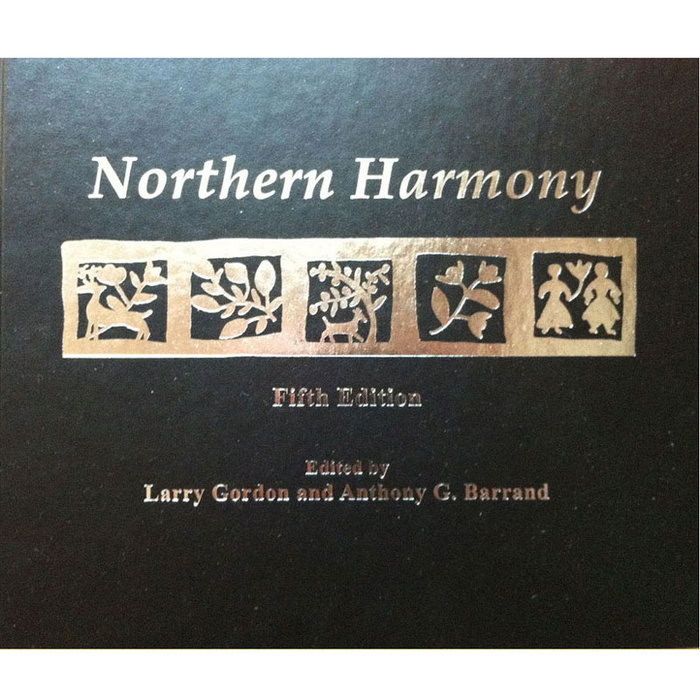Northern Harmony (1980)
Northern Harmony stands at a pivotal point in the history of four-shape tunebook publishing—bridging the end of a Revival era and the emergence of the Contemporary era where new tunebooks and old flourished within a growing community of singers. Conceived in 1979 as a project at Marlboro College, the first edition was strictly a revival tunebooklet, reprinting early New England compositions in four-shape notation. But with the release of its second edition in 1990, Northern Harmony became the first truly contemporary tunebook, introducing new music written by active singers and composers in the Northeast. Through subsequent editions, it evolved into a living document of the modern shape-note community, combining historical recovery with creative contribution.

Northern Harmony: From Revival Roots to Contemporary Voice
Northern Harmony stands at a pivotal point in the history of four-shape tunebook publishing—bridging the end of the Revival era and the emergence of the Contemporary era, in which both new tunebooks and faithful reprints began to flourish within a growing international community of singers. Conceived in 1979 as a college project, the first edition was a small revivalist effort that grew—through decades of community, scholarship, and musical creativity—into the first fully realized contemporary tunebook of the shape-note singing revival.

Origins: A Student Project in Vermont (1979–1980)
The first edition of Northern Harmony was born as a January-term project at Marlboro College in Windham County, Vermont. Carole Moody (later Crompton), then a student, led the effort to compile a collection of early New England hymns that had largely disappeared from modern singing practice. Her work was guided by Dr. Tony Barrand (1945–2022), a British-born folklorist and professor at Boston University, whose interest in Anglo-American folk traditions gave the project academic structure and musical depth.
At its core, the first edition was a revival tunebooklet—a modest compilation of historical tunes presented in four-shape notation. Carole transcribed the tunes from standard notation and illustrated the pages herself, while Beth Spicer and David Gordon contributed research assistance. Though its scope was limited, the work reflected the first stirrings of a new interest in New England’s shape-note heritage. With support from the Marlboro College Alumni Council, the edition was printed in 1980 and quietly entered the world of American folk music scholarship.
Barrand and Crompton: Scholarship and Foundations
Tony Barrand, well known for his work as one half of the folk duo Roberts and Barrand, and as an authority on Morris dancing and traditional ballads, brought rigorous historical perspective to the project. He edited composer biographies, contributed editorial insight, and, in later editions, even helped typeset shape-notes by hand—crafting individual heads pixel by pixel for early computer-generated layouts. His role helped ensure the book’s scholarly grounding, while Carole’s foundational work in shaping the format, notation, and visual identity of Northern Harmony remained integral to all that followed.
Carole also researched and wrote historical composer biographies for the early volumes and, with the help of fellow folklorist Nym Cooke, brought to light many forgotten figures of early American hymnody. Though her name was quietly removed from the front cover of the fourth edition (1998), her contributions remained embedded in the DNA of the tunebook.
A New Direction: Larry Gordon and the Second Edition (1990)
In 1987, Larry Gordon (1945–2021)—a choral director, singer, and founder of Village Harmony—joined the project and brought with him a transformative vision. Rather than focusing solely on historical recovery, Gordon proposed that the tunebook become a living document—one that would include music by contemporary shape-note composers active in New England and beyond.
To give the community a preview of the work that had been completed, a tunebooklet was released. The inside cover reads, in part: “This collection of early New England music was prepared for the Northern Harmony Singing Convention held in Woodstock, Vermont on November 12, 1988. It is a preview of a larger, more finished, hardbound volume to be published in April, 1989.”
The final result was the second edition, released in 1990. This volume marked a turning point: Northern Harmony became the first truly contemporary tunebook of the shape-note Revival. In contrast to books that merely preserved or reissued earlier works, Northern Harmony began to actively commission, include, and celebrate new compositions, many by younger singers and members of Gordon’s Village Harmony ensembles.
The First Digital Tunebook?
A note on the inside cover of the Northern Harmony, 2nd edition (1990), states that all the music was also made available on 3.5″ floppy disks for Apple Macintosh computers, in both Professional Composer and MIDI formats. This is likely the first publicly distributed digital edition of a complete shape-note tunebook—not merely a typesetting tool, but a user-accessible musical resource. By my definition, Northern Harmony began as a Revival Era tunebooklet, and with the 1990 edition, it transformed into a full tunebook, marking a turning point in the modern history of shape-note publishing. This edition not only revived the practice of publishing new tunebooks—something that had not occurred in over fifty years, and arguably over a century—but also moved shape-note tunebook culture into the digital age and into what I define as the current period of expansion.
Growth and Maturity: Third to Fifth Editions
The third edition expanded this new direction, incorporating even more original works while continuing to include historically significant tunes. The technical production also improved: music was typeset using Finale software, with a shape-note font adapted by Keith Willard and refined by John Roberts. This edition helped establish Northern Harmony as a central resource for shape-note singers eager to explore both tradition and innovation.
The 3rd Edition of the Northern Harmony played a notable role in the first Sacred Harp convention held outside the United States—the 1st UK Shape Note Convention, held in September 1996 in Hitchin, Hertfordshire. That event featured both The Northern Harmony (Revised Third Edition) and The Sacred Harp (Denson, 1991).
The fourth edition (1998) brought visual refinement, with new illustrations by English singer and artist Tom Bower, alongside a growing collection of new tunes. Carole’s name was no longer featured on the front cover, though much of her original structure and vision persisted. The composer list continued to grow, reflecting a broader and more geographically diverse pool of contributors.
The fifth edition, published in the early 2010s, was the most ambitious to date. It contained 160 songs, with 81 by living composers, and showcased the culmination of decades of collaborative editing and musical curation. Larry Gordon typeset the edition using Sibelius software, adjusting the shape-note fonts for clarity and visual impact. The final PDF was compiled with Adobe Acrobat and prepared for print. Additional illustrations came from Tom Bower and Vermont woodcut artist Mary Azarian, while Tony Barrand remained deeply involved, editing composer biographies and compiling indexes.
Legacy and Loss: The Passing of the Editors
Both of the tunebook’s longtime editors passed away in the early 2020s: Larry Gordon in 2021 and Tony Barrand in 2022. Their deaths marked the end of an era not just for Northern Harmony, but for the broader shape-note revival movement. Gordon’s energy and leadership had nurtured generations of young singers and composers, while Barrand’s scholarship and artistic sensibility grounded the project in historical continuity. Their combined work ensured that Northern Harmony was not just a tunebook, but a community artifact—an evolving archive of living music.
A Bridge Between Eras
Viewed in the context of tunebook history, Northern Harmony marks a transition from the Revival era to the Contemporary era of shape-note publishing. Its first edition was clearly revivalist, compiling old tunes in new typeset form. But with the 1990 second edition, it became a pioneering contemporary tunebook—something new, not just recovered. The potential that it also produced the first digital tunebook is remarkable as well. It remains one of the earliest and most influential publications to successfully combine historical preservation with vibrant, ongoing creativity. In doing so, it opened the door for later contemporary tunebooks and helped shape the culture of modern shape-note singing.
Northern Harmony Edition Timeline
1980, First Edition, 56pp
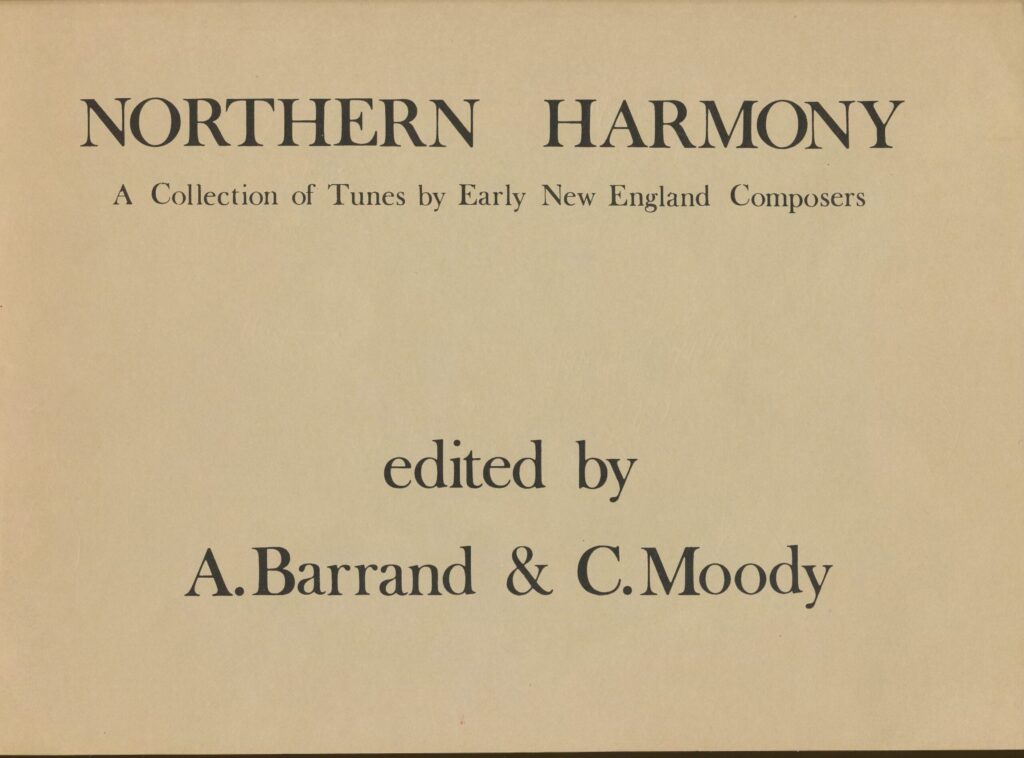
The tunes in this first effort were:
Amanda – 26
Appletree, The – 6
Begone Unbelief – 5
Bristol – 42
Chester – 4
Chocksett – 45
Crostic – 8
Despair – 23
Emmanuel – 2
Election Hymn – 11
Evening Hymn – 14
Greenfield – 1
Harvest Hymn – 16
Huntington – 30
Lisbon – 34
Love Divine – 18
Marlborough – 46
Montgomery – 24
Pittsford – 38
Pleasant Valley – 28
Poland – 44
Sounding Joy – 32
Spring – 35
Swanton – 40
Wedding Hymn – 15
Weeping Mary – 22
Winter – 35
Young Convert, The – 20
1985 Revised Tunebooklet
(I have not been able to examine a copy of this, but the 1990 edition notes that the 1980 booklet was “re-issued with revisions in 1985.)
1988 Preview Tunebooklet
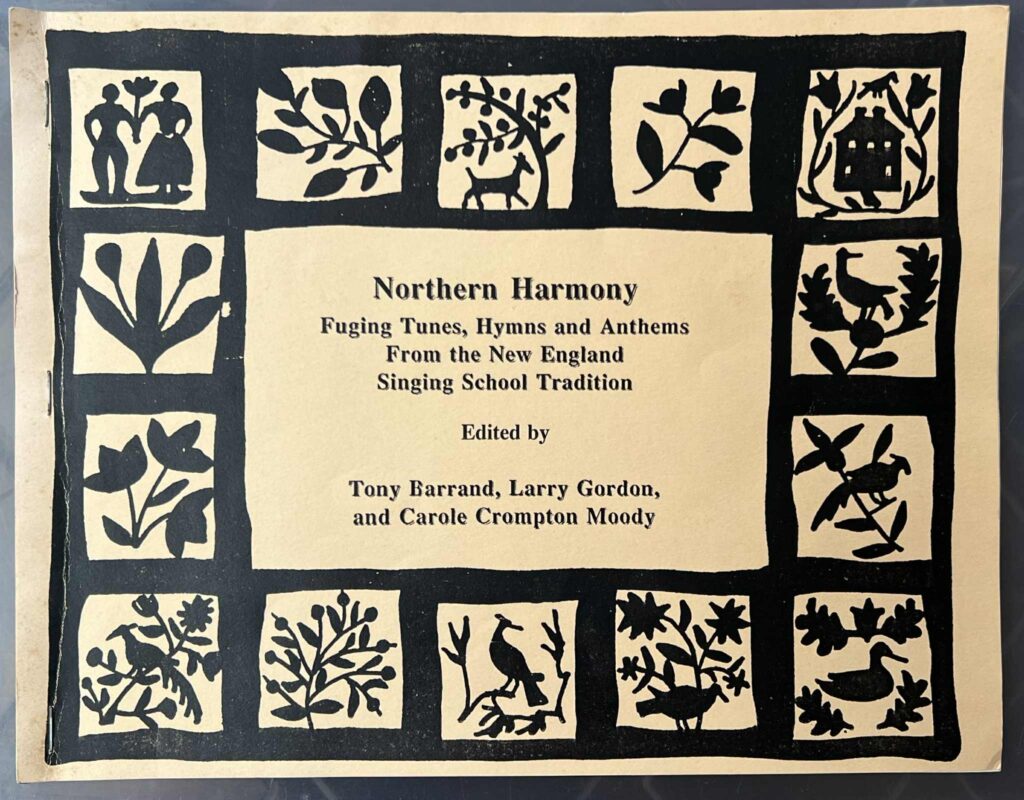
The tunes contained in it were as follows:
Carol – Supply Belcher
Evening Hymn – Jeremiah Ingalls
Farewell Hymn – Jeremiah Ingalls
Free Grace – Jeremiah Ingalls
Greenfield – Lewis Edson, Sr.
Hampton – Eliakim Doolittle
Honor to the Hills – Jeremiah Ingalls
Immensity – Eliakim Doolittle
Harvest Hymn – Jeremiah Ingalls
Jerusalem Anthem – Elisha West
Marlborough – Abraham Wood
Newbury – Ebenezer Child
Pleasant Valley – Justin Morgan
Reflection – Supply Belcher
Roslin Castle – Elisha West
Swanton – Hezekiah Moors
Tribunal – Eliakim Doolittle
Windsor – Elisha West
Wedding Hymn – Jeremiah Ingalls
1990 Second Edition, 142pp
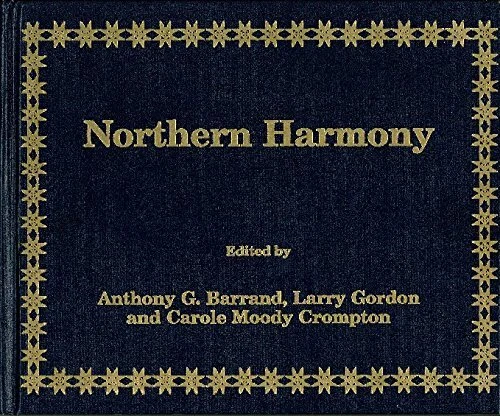
1992 [Second Printing, Second Edition?] 142pp
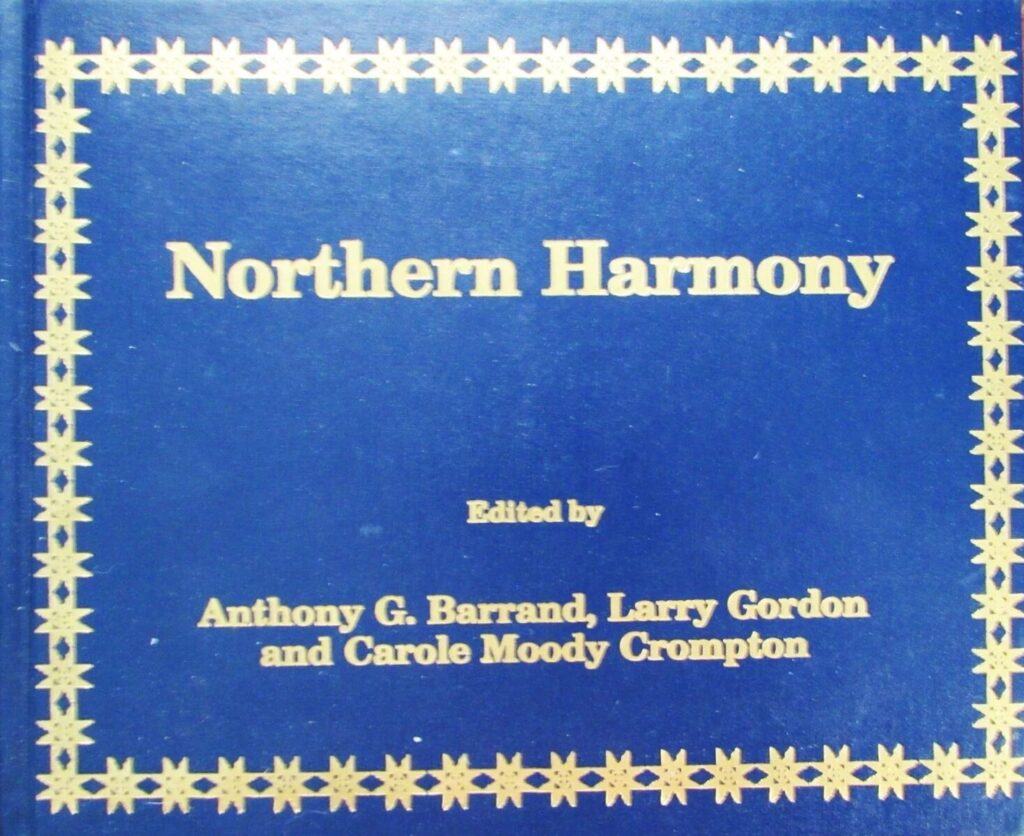
199(2?) Second Edition, Digital
A note on the inside cover of the Northern Harmony, 2nd edition (1990):
Computer Disk Files: All of the music included in the 2nd edition of Northern Harmony is available in Apple Macintosh computer format on 3-1/2″ disks as “Professional Composer” files(® Mark of the Unicom version 2.3 or
2.3M) or as MIDI files which can be read by other music transcription programs.
1995, Third Edition, 262pp
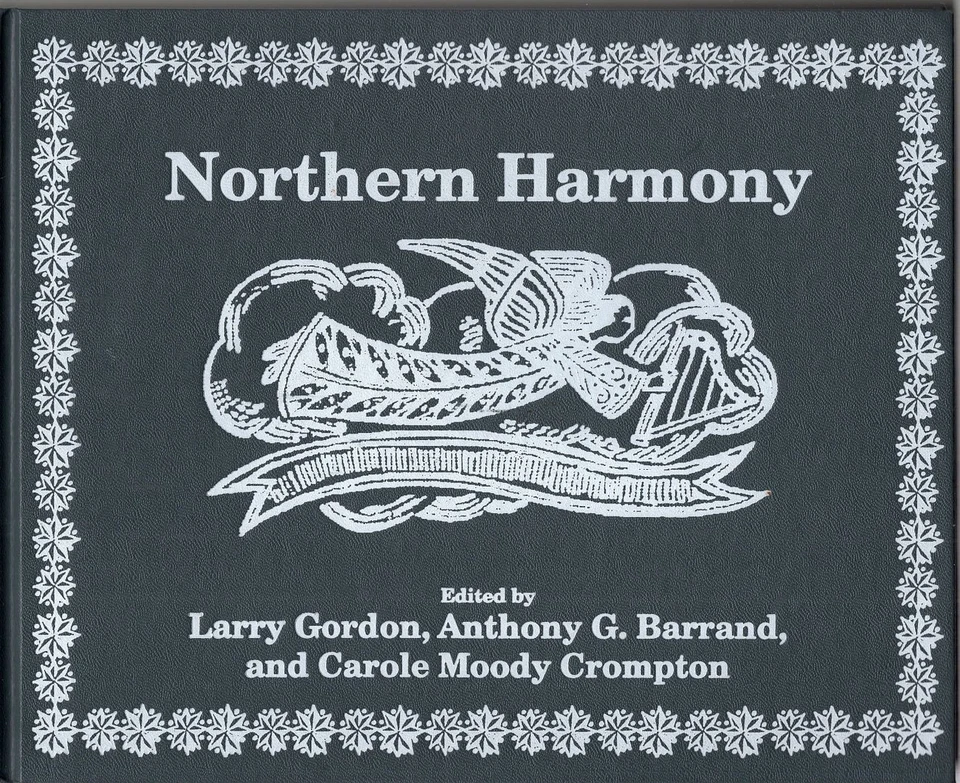
1998, Fourth Edition, 269pp
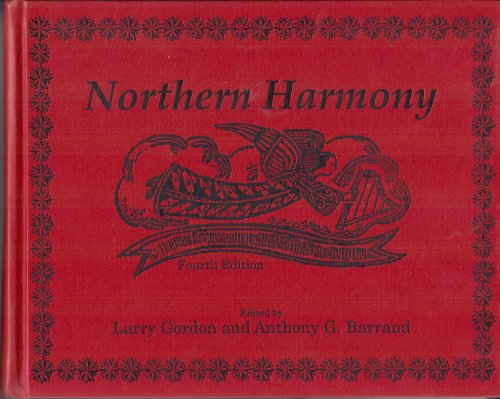
2012, Fifth Edition, 320pp
